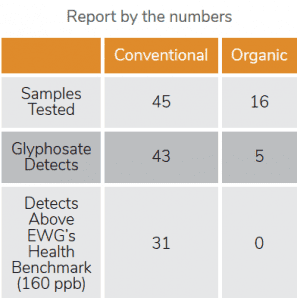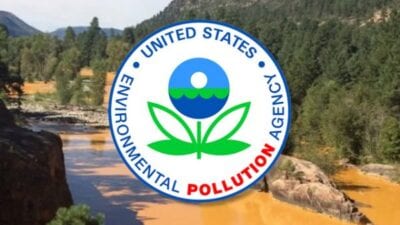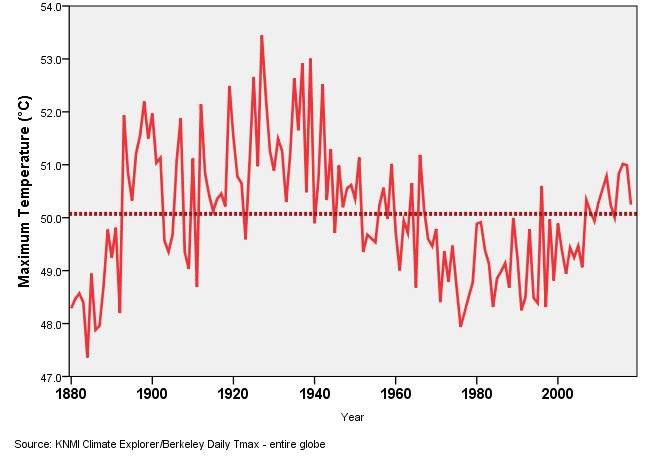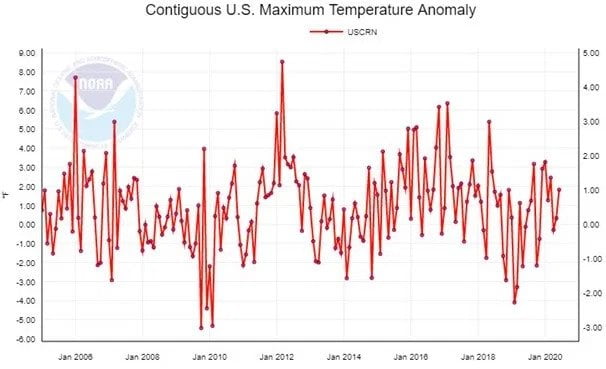Favoritism
Shockingly, the EPA doles out hundreds of millions of dollars every year to certain organizations. The funds are awarded with no notice, accountability or competition according to the Government Accountability Office. The monies almost always go to favored entities that in some instances have used the funds for non-environmental purposes.
The GOP staff of the Senate Environment and Public Works Committee issued a detailed report in late July 2014 on the secretive “Billionaire’s Club” behind the EPA. The analysis exposed how a massive network of left-wing foundations, activists, and wealthy donors exploits IRS-approved “charitable” status and tax-deductible donations to lobby illegally on behalf of the EPA and operate a “green revolving door” between government and far-left groups. During Jackson’s tenure, top EPA officials used private email accounts to correspond with environmental activists
Among the key players: the Environmental Grantmakers Association, which coordinates green grants and refuses to divulge its membership list to Congress, and Democracy Alliance, the dark-money outfit led by Philip Gara LaMarche that does not disclose its members or donor-recipients.
“These entities propagate the false notion that they are independent citizen-funded groups working altruistically,” according to the report. “In reality, they work in tandem with wealthy donors to maximize the value of the donors’ tax-deductible donations and leverage their combined resources to influence elections and policy outcomes, with a focus on the EPA.”
Saving the planet? Ha. The leftist-controlled EPA is only in business to serve its pals and subvert its political enemies, while endangering resource security and sabotaging the deliberative process. Real environmental protection starts with draining this fetid swamp.
The EPA’s record of sleaziness, its disregard for transparency, its lack of basic integrity, its fraudulent estimation of costs/benefits and now its attempt to defy and evade a Federal Court order (and by extension FOIA, mail and wire fraud laws) combines both inbred corruption and serious scandal. Together these faults suggest that it may be time to dismantle the agency.
In spite of the corruption by previous EPA chiefs, the media ignored their wrongdoings and targeted Trump’s appointed EPA chief like a hawk. Environmentalists and sympathetic journalists have aggressively went after stories related to Pruitt’s flying first class, condo rental, decision on raises and security detailin such an harassing manor that he was forced to resign in 2018. They filed Freedom of Information Act requests on Pruitt’s travel and security spending. EPA and White House sources even leaked information to eager reporters. Both Jackson and McCarthy also spent nearly $1 million on flights overseas, but no one was requesting records for their flights.
Where was this interest in the personal goings on of EPA administrators during the Obama administration? Obama administration EPA heads had their own controversies the media largely ignored.
Pruitt was under fire for spending more than $100,000 on first class travel during his first year, including a flight to the G7 summit in Italy. The Italy flight alone cost $120,000, including security and it being a military flight. However, Lisa Jackson spent $155,000 on a flight for her and her security detail to China in 2011. McCarthy spent $90,000 on a 2015 trip to Dubai. But it is difficult to get a truly apples-to-apples comparison of travel costs between Pruitt and past administrators. Why? Because we don’t have domestic travel costs for past administrators or the costs of military flights they may have taken due to their lack of transparency.
Amid accusations of multiple ethical failures, Scott Pruitt resigned in July 2018.
“It is extremely difficult for me to cease serving you in this role first because I count it as a blessing to be serving you in any capacity, but also because of the transformative work that is occurring,” Pruitt said in his resignation letter, posted by Fox News.
“However, the unrelenting attacks on me personally, my family, are unprecedented and have taken a sizable toll on all of us.”
President Trump tweeted that he has accepted Pruitt’s resignation and has appointed the agency’s deputy administrator, Andrew Wheeler, as the acting head.
“Within the Agency Scott has done an outstanding job, and I will always be thankful to him for this,” Trump wrote.
Trump said he has “no doubt that Andy will continue on with our great and lasting EPA agenda.”
“We have made tremendous progress and the future of the EPA is very bright!”
Fox News host Mark Levin characterized Pruitt as a victim of a political hit job.“Well, they finally got Scott Pruitt. The EPA is hostile territory for any true conservative trying to tame it,” he wrote. “And the acting administrator is another lifer. Major step backward.”
Washington observer Mollie Hemingway, senior editor at the online magazine The Federalist and a contributor for Fox News, said that the issue is “not that Scott Pruitt showed bad judgment” – although she said some charges were false or exaggerated – it’s that he was effective in his job and, from the beginning, drew the wrath of a campaign called “Boot Pruitt.”
Hemingway, in a panel discussion on Bret Baier’s “Special Report,” said Pruitt was “articulating and advancing an agenda very different than what you had seen from previous EPA administrators.” She emphasized that the reason Pruitt was under attack for the entirety of his administration was not because he showed bad judgment. “The campaign that was funded by so many of these environmental groups was about going over every single decision he made, every single casual comment he made, with a fine-toothed comb so they could oust him,” she said. Hemingway said the success of the Boot Pruitt effort will make it a blueprint for the left, noting that already activists are calling for the new acting administrator, Wheeler, to be removed, arguing he will continue Pruitt’s policies.
https://www.youtube.com/watch?v=m0Qq1CrXAPo
- In late April 2014, in an effort to save about $5 million over less than two years, Flint switched from purchasing treated Lake Huron water from Detroit, as it had done for 50 years, to treating water from the Flint River.
- Shortly after the switch, residents began complaining about the water’s color, taste, and odor.
- Boil-water advisories were issued by the city due to coliform bacteria detection in August and September 2014.
- In October 2014, a General Motors plant in Flint stopped using the municipal water because it was corroding car parts.
- Turns out, the water supply was contaminated with high levels of lead, and THMs, (a chlorine byproduct of disinfecting water, with which long-term exposure has been linked to cancer and other diseases) were detected in some areas.
- It took 18 months of resident complaints for the state to issue a warning. On October 1, 2015, Flint officials finally began urging citizens to stop drinking the water.
What was the EPA’s role in this?
In February 2015, EPA water expert Miguel A. Del Toral identified potential problems with Flint’s water after being alerted by resident LeeAnne Walters. He confirmed his suspicions in April and summarized his concerns in an internal memo in June. That memo was leaked to the public. Despite Del Toral’s dire warnings, the EPA did not officially release the memo to the public until November. In fact, emails show that EPA Region 5 Director Susan Hedman (who resigned in January) tried to keep the astronomically high levels of lead in the water under wraps.
So, for at least six months, the agency knew that Flint residents’ health was in jeopardy, but said nothing. As early as April 2015, the EPA knew there were problems with the water supply, but instead of DOING anything about it, the agency sought a legal opinion on whether the EPA could force action…which wasn’t completed until November! That’s right – Michigan’s Department of Environmental Quality (DEQ) and the EPA spent at least SIX MONTHS arguing over the interpretation of a 25-year old regulation instead of notifying the public that the water supply was likely posing serious health risks.
When asked about the delay, an EPA official said the agency’s role is to set standards, not to notify residents about contaminants in their water supplies. In other words, the EPA said, “That’s not our job.” Not only were an estimated 6,000 to 12,000 children exposed to lead, at least 12 people in the region died from Legionnaires’ in parts of 2014 and 2015. On March 21, the Flint Water Advisory Task Force (FWATF) published a report on its findings and recommendations regarding the water crisis. The report outlines failures at “all levels of government.”
Among the alarming findings:
EPA failed to properly exercise its authority prior to January 2016. EPA’s conduct casts doubt on its willingness to aggressively pursue enforcement (in the absence of widespread public outrage).
EPA has accepted differing compliance strategies that have served to mute its effectiveness in detection and mitigation of lead contamination risks.
EPA was hesitant and slow to insist on proper corrosion control measures in Flint.
On June 16, McCarthy sent a letter to Flint officials stating that the city has “significant challenges” to providing clean, safe drinking water in the long term, including a treatment plant that is not “adequately staffed, operated or administered.”
A week later, the EPA announced that tap water in Flint is now safe to drink, as long as it is filtered.
Gold King Mine wastewater spill
On August 5, 2015, an EPA clean-up crew caused an environmental disaster of epic proportions in Colorado.
- When attempting to pump out and decontaminate sludge in the mine, they accidentally (some believe it was intentional, but we will get to that in a moment) destabilized a dam of loose rock, which resulted in the spilling of three million gallons of mine waste water and tailings, including heavy metals including cadmium and lead, and other toxic elements -including arsenic, beryllium, zinc, iron and copper – into Cement Creek, a tributary of the Animas River.
- The EPA was criticized for not warning Colorado and New Mexico until the day after the waste water spilled, despite the fact that the agency knew there was a risk of collapse.
- Last year, before the spill, some predicted that the EPA would “foul the Animas River on purpose in order to secure Superfund money.”
Then – surprise! On September 7, 2016, this story broke: EPA names Gold King Mine a Superfund site
It gets better: On August 25, 2016, The Daily Caller reported that Environmental Restoration LLC – the company that the EPA contracted to help clean up the mine – was awarded nearly $2.7 million not long after the disaster. What does this mean? The Daily Caller spoke to Adam Andrzejewski, CEO, and founder of transparency group Open The Books, and here’s what he said:
“EPA’s decision to reward the firm involved in the Gold King Mine disaster shows they’re more concerned about protecting themselves and their friends than the environment.
The EPA itself is a Superfund site – sadly, it’s a cesspool of corruption, cronyism and incompetence. In the real world, poor performance is punished but with the federal government it is too often tolerated and applauded. The EPA is one of the worst offenders.”
In 2015, Rep. Paul Gosar (R-Ariz.) introduced a resolution of impeachment against McCarthy because he says she lied to Congress during testimony about the EPA’s new clean water rules. The claim is that she perjured herself three times.
McCarthy has claimed – repeatedly – that the EPA “prioritizes transparency, openness, and participation in all that we do” but recent events do not support that claim.
In July 2016, a pipeline outside of an ExxonMobil plant in Baytown, Texas, leaked a highly flammable gas into the surrounding community. Unfortunately, this kind of incident is not unusual, reports The Hill:
Chemical releases such as Baytown’s happen with startling frequency and have the potential to impact thousands. The US Environmental Protection Agency (EPA) has identified 466 chemical facilities across the nation that each put 100,000 or more people at risk of a poison gas disaster. Since the West, Texas, disaster just a little over 3 years ago, there have been more than 430 chemical incidents resulting in 82 deaths.
Despite this, the EPA recently proposed changes to its chemical disaster prevention rules (called the Risk Management Plan, or RMP) that specifically exclude warning residents about potentially dangerous facilities in their communities.
And more cover-ups…
In August 2016, a government watchdog group reported that EPA officials concealed life-threatening pollution at a North Carolina Superfund site and moved too slowly in removing the cancer-causing materials.
New York state officials claim the EPA has been “counterproductive” in its response to a drinking water contamination crisis in Hoosick Falls, an upstate town. In a letter to McCarthy, NY officials made some disturbing claims (emphasis mine):
While we always try to work in partnership with the federal government, the Environmental Protection Agency’s (EPA) role in the Hoosick Falls situation was certainly not helpful, and was, at times, counterproductive. As you know, perfluorooctanoic acid (PFOA) is an unregulated contaminant, although the EPA has known of its existence in drinking water for more than a decade.
The statements and guidance from the EPA’s regional office inexplicably differed from town to town in New York – not to mention from state to state. To further compound this confusion, the guidance from the EPA’s regional office differed from the EPA’s headquarters. In the span of several months, the EPA took no less than three different positions regarding PFOA. This lack of clear direction and, in fact, differing direction caused our agencies great hardship in responding to the situation in Hoosick Falls and more importantly, caused great public concern, frustration, and anxiety.
We believe the EPA’s handling of this matter aggravated the situation, causing undue expense to our agencies, and the EPA should reimburse the state for the extraordinary costs incurred due to the EPA’s mishandling. We estimate that cost to be almost $25 million to date to our taxpayers, with at least $50 million in costs over the coming years.
In January 2016, the EPA officially found that the neonicotinoid imidacloprid can harm bees, the first part of a multi-part effort to study the pesticide family after years of pressure from activists – and millions of unnecessary bee deaths. But has the agency done a thing about it? Nope – the EPA has not officially proposed any measures to further restrict the use of the pesticide. This is sort of a big deal because humanity won’t survive long without bees.
The EPA is also being accused of using “secret science” to write rules without giving the public and outside experts an opportunity to analyze their research.
EPA’s ‘Climate Change Indicators’ Website Pushes Heatwave Lies
The U.S. Environmental Protection Agency brought back its Climate Change Indicator’s platform last week. The platform claims various weather trends show, “Climate change is happening now … [causing] more extreme weather events.” This is false. Data from the U.N. Intergovernmental Panel on Climate Change (IPCC) and the U.S. National Oceanic and Atmospheric Administration (NOAA) show incidences of extreme weather events are neither more frequent nor more severe than in the past. Among the indicators that the EPA uses to show human carbon dioxide (CO2) emissions are causing dangerous climate change are increases in heatwaves in the 50 largest metropolitan areas in the United States, from 1961 through 2019.
The EPA writes:
- Heatwaves are occurring more often than they used to in major cities across the United States. Their frequency has increased steadily, from an average of two heatwaves per year during the 1960s to six per year during the 2010s.
- In recent years, the average heatwave in major U.S. urban areas has been about four days long. This is about a day longer than the average heatwave in the 1960s.
- Of the 50 metropolitan areas in this indicator, 46 experienced a statistically significant increase in heatwave frequency between the 1960s and 2010s.
The NOAA data EPA cites does show an increase in the number and length of heatwaves in America’s largest cities. That fact tells only part of the story, not the whole truth. EPA’s heatwave report misleads about the causes of the increasing number of hot days (actually nights) in major cities and for the United States as a whole. Several facts EPA buries in the fine print indicate supposed human-caused global warming is not causing an increase in the number and intensity of heatwaves in the United States.
First, EPA cherry-picked the 1960s – during a period of global cooling – as the baseline for its heatwave comparisons. Nevertheless, heatwaves during recent decades remain far less frequent and severe than was the case during the 1930s.
Indeed, a majority of each state’s all-time high-temperature records were set during the first half of the 20th century.
EPA grudgingly acknowledges this fact, admitting “Longer-term records show that heatwaves in the 1930s remain the most severe in recorded U.S. history.”
The agency devotes only a single bullet point to this fact amidst multiple pages of heatwave alarmism.
Second, EPA downplays the role expanding urbanization and intensive human development in and around cities has played in driving measured heat increases (the urban heat island effect).
Even the climate alarmist group the Union of Concerned Scientist (UCS) remarks on EPA’s heatwave sleight of hand in an article titled, “Four Things to Know—and a Word of Caution—about EPA’s Climate Change Indicators Website Reboot.”
“Human-caused climate change often intersects with other trends that affect climate locally or regionally, which often makes it tricky to answer the question. How much of what we’re seeing is due to human-caused climate change, and how much is due to other things?” writes the author of the UCS story. “Urban heatwaves are a prime example.”
The Union of Concerned Scientists article continues,
“The data represent 50 urban areas across the United States—not the country as a whole. … What we’re likely seeing here is that urban areas have experienced a combination of rising temperatures, driven by human-caused climate change, and an increase in the urban heat island effect resulting from urban development. The page on EPA’s website that’s about this indicator includes information about the urban heat island effect, but it’s buried in the ‘About the Data’ section.”
In its “About the Data” section, EPA writes:
As cities develop, vegetation is often lost, and more surfaces are paved or covered with buildings. This type of development can lead to higher temperatures—part of an effect called an ‘urban heat island.’
Compared with surrounding rural areas, built-up areas have higher temperatures, especially at night. Urban growth since 1961 may have contributed to part of the increase in heatwaves… This indicator does not attempt to adjust for the effects of development in metropolitan areas…
The fact that higher urban temperatures are reflected almost exclusively in higher nighttime lows, rather than higher daytime highs, demonstrates the urban heat island effect is the key factor to driving more heatwaves in cities.
EPA reports many of the temperature readings it referenced were at airports, which have grown considerably in size and traffic since the 1960s.
The cities themselves have sprawled into surrounding countrysides. Rural areas have become swallowed by asphalt, concrete, dark rooftops, and covered with multiple sources of artificial heat such as homes, businesses, plus the heaters, air conditioners, traffic, and artificial sources of light associated with them.
These surfaces absorb heat during the day, only to release it slowly at night, resulting in higher measured nighttime low temperatures.
The first-ever comprehensive review of the quality of data, coming from the National Weather Service’s (NWS) network of stations, examined more than 850 stations. It found that 89 percent of the stations, nearly nine of every 10, fail to meet NWS’s own siting requirements for trustworthy measurements.
As shown in the figure below, the most accurate nationwide temperature station network, the U.S. Climate Reference Network (USCRN), shows no increasing trend in high temperatures in the United States since it was established in 2005.
The USCRN was specifically assembled to counteract the recognized bias in NWS temperature measurements and trends resulting from increased urbanization.
As cities grow, they get hotter, especially at night. Contrary to EPA’s assertion, there is no evidence that the increase in heatwaves in America’s 50 largest cities is due to global warming. Instead, the data indicate it is an artifact of urban growth.
This is a fact even climate alarmists like the UCS recognize.
Sources:
- https://www.counterpunch.org/2015/02/24/the-secret-history-of-the-epa/
- https://www.americanthinker.com/articles/2013/02/epa_corruption_and_scandal.html
- https://www.westernjournal.com/exposed-environmental-corruption-agency/
- http://dailycaller.com/2018/04/09/media-epa-scott-pruitt-obama-scandals/
- https://www.wnd.com/2018/07/epa-chief-scott-pruitt-resigns/
- climatechangedispatch.com
Chronological History of Events Involving the EPA

Study: Safety of Safety Evaluation of Pesticides (Dow Chemical Faked Safety Studies on Brain-Damaging Chlorpyrifos)

Study: 100 percent of Oat Cereals Tested Positive for Residues of Glyphosate, the Active Ingredient in Roundup that Causes Terminal Cancerherbicide

Study: Threshold for Harmful Chemicals in Drinking Water Lower than Thought

The FDA Responds to FOIA Requests Regarding Glyphosate Residue Testing

EPA’s Scott Pruitt Attacked for Daring to Require Full Transparency of Scientific Evidence behind EPA Regulations

The Poison Papers: Watchdog Groups Release 20,000 Docs Exposing Decades of Collusion between Industry and Regulators over Hazardous Pesticides

Big Ag Companies Ordered to Stop Aerial Spraying Thanks to Ragtag Group of Oregon Locals

Dupont Settles Toxic Chemical Water Contamination Lawsuit that Affected Six Water Districts

US EPA Scientist Fired For Trying To Tell The Truth About Climate Engineering And Fluoridated Water






